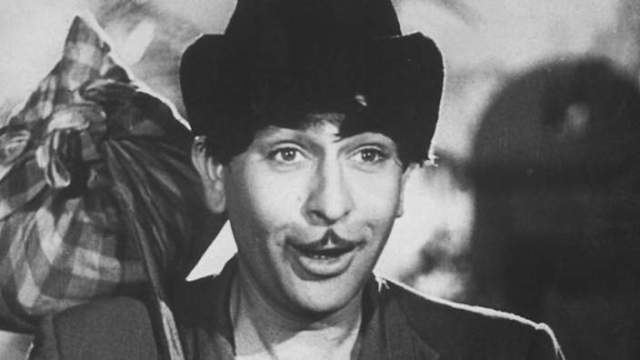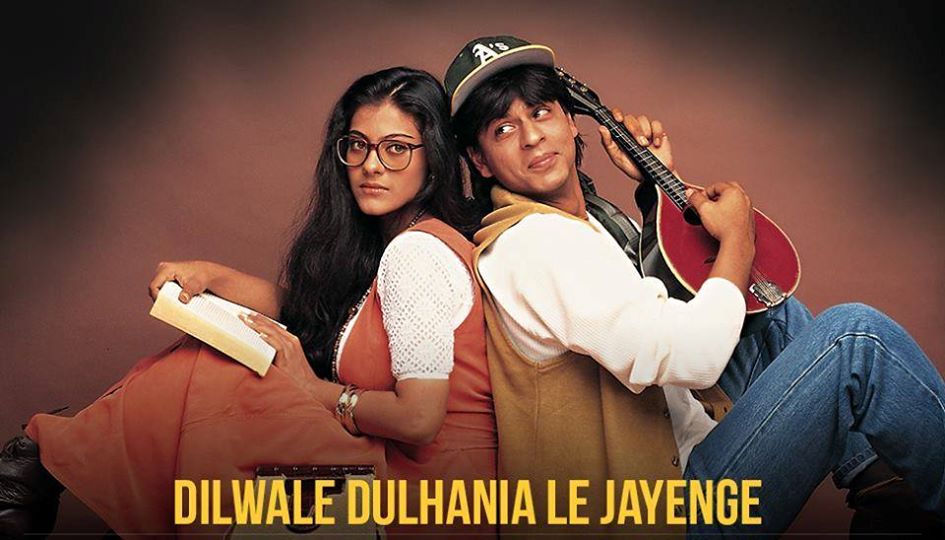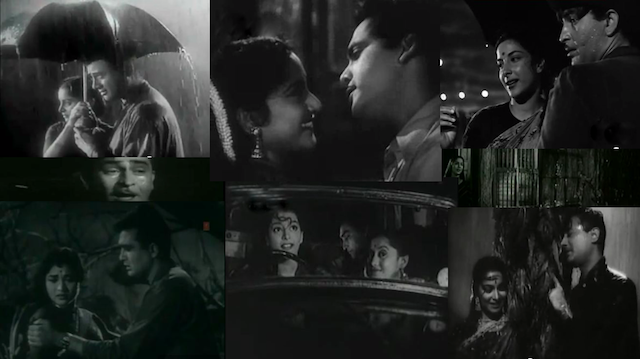Ranbir Raj Kapoor, born in Peshawar, then undivided India, was the eldest son of theatre doyen, Prithviraj Kapoor. Apprenticed to the studios at a very young age, he made his first appearance in a movie called Inquilab, which starred his father and Durga Khote. A few years later, he moved on to assisting director Kidar Sharma. It was Sharma who gave him his first break as hero – in Neel Kamal (1947) opposite another débutante, Madhubala.
Raj Kapoor was an actor by mischance; his whole ambition was geared toward film-making. However, he was a very successful actor, ruling over Hindi filmdom as one of the troikas that included Dilip Kumar and Dev Anand. Though he moved on to direction very early in life and was (mostly) the protagonist in the movies he produced under the RK Banner, he still acted in quite a few movies for outside directors. Quite a few of them were commercial successes, many of them showcased him in ways that were very different from his ‘tramp’ persona which had come into being with Awara.
1) Teesri Kasam(1966) 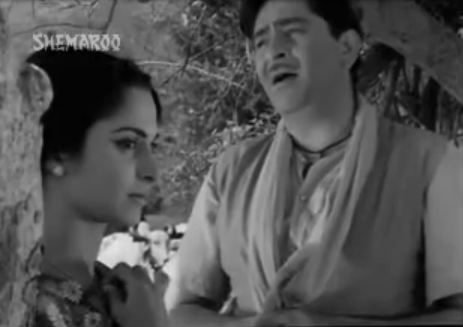
Without doubt, Raj Kapoor‘s finest performance. He is a simple villager, naive and innocent, but there was no Chaplinesque patina gilding his Heeraman. Heeraman has already got into trouble twice – once, for transporting illegal goods, and after barely escaping the police nets, he vows never to carry anything illegal again. The second time, he carries bamboo – when traders’ horses spook from the bamboo in his cart, he takes his second vow – he will never carry bamboo in his cart again. Some time later, he is given the task of taking a passenger, a nautanki dancer Heerabai to a village fair some 40 miles away.
The two very disparate people are attracted to each other; she, to his naive simplicity, and his innate goodness; he, to her beauty and (to him) shining purity. The journey passes comfortably with Heeraman narrating local legends and singing songs to while away the time.
It is when they reach the fair that Heeraman realises that Heerabai is seen as a prostitute by the locals. He gets into many fights on her behalf, until Heerabai sets him straight herself. She is no blushing innocent, she is a woman who has been bought and sold many times. He wants her to leave the stage and live a ‘respectable’ life. She, knowing better, is loth to leave her career, for after all, how long can she pretend to be something she is not?
https://www.youtube.com/watch?v=19j3iPlZQpM
In an era that had already begun to experiment with colour – Mehboob Khan‘s ‘Aan‘ (1952), the first colour , had been released more than a decade before – producer Shailendra (the lyricist) and director (Basu Bhattacharya) were both adamant that Teesri Kasam, based on Phaniswarnath Renu‘s Maare Gaye Gulfam, would be shot in Black & White.
Movie lore has it that when Shailendra narrated the story to Raj Kapoor, the latter listened attentively and then asked Shailendra for his paeshgi (advance). Shailendra was crestfallen. He did not have the means to pay Raj Kapoor’s market rate, and he was devastated that a friend (his association with RK went back to RK’s first film) would treat him thus. A moment later, Raj Kapoor laughed and said “Give me one rupee”. And that was his fee for the entire film. Unfortunately, despite sterling performances from the leads, and a scintillating music score from Shankar-Jaikishen, the film sank at the box-office, leaving Shailendra a broken man. It won the National Award for Best Film in 1967, reviving its commercial chances, but Shailendra did not live to see his film’s well-deserved success.
2) Jagte Raho (1956)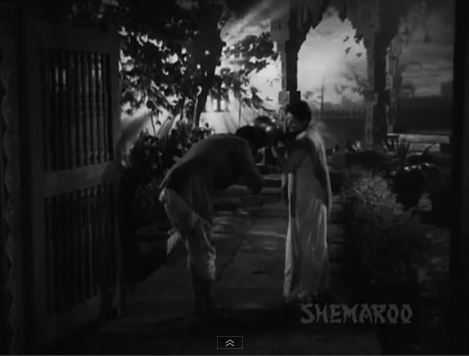
This film has to be ranked amongst the best of not only Raj Kapoor’s performances, but also among the best Hindi films of any time. An allegorical tale that uses darkness and light to rip off the mask of respectability worn by the moral pillars of society, Jagte Raho tells the story of the plight of one man, who, upon coming to the city in search of employment, cannot find a sip of water to quench his thirst. In a beautiful scene that sets the tone for the rest of the movie, he makes friends with a street dog, the only friendly face that he finds, sharing his meal with him. In return (or so it seems), the grateful animal steers him to a water pump – in the middle of a large courtyard in front of a residential building.
The film unwinds slowly over the length of one night, but gains momentum as the protagonist, a simple villager (Raj Kapoor), moves from flat to flat to escape his tormentors who chase him as a thief. And in his seemingly futile attempts, uncovers a multitude of sins / vices, ranging from petty thievery to adultery to alcoholism to counterfeiting; he even masquerades as a corpse! Eventually, it is a child’s belief in him that gives the villager the courage to walk out amidst the vigilante posse of tenants who are hunting him as a thief. It is ironical then, that no one gives him a passing glance.
The film was a satirical look at the Bengali society of the time, but it could have been transposed to virtually any teeming metropolis without losing its relevance. And Raj Kapoor barely had any dialogues in the film – his fear, his pain, and his helplessness were vividly etched on his face, and mirrored in his eyes. This was truly a class act from the master filmmaker, who also had the guts to produce this modern fable.
With music by Salil Choudhary and directed by Bengali great Shombhu Mitra (who also wrote the story along with fellow Bengali Amit Maitra), the shortened version of this film won the Gran Prix at the Karlovy Vary International Film Festival. This was the last time Nargis appeared in an RK film.
https://www.youtube.com/watch?feature=player_embedded&v=_X0e5AS7EPw
There is an interesting story that is often told about the making of this film. Shombhu Mitra and Amit Maitra came to Raj Kapoor with the story of Jagte Raho and wanted him to produce the film. Upon Raj Kapoor agreeing to do so, they asked if he would also be willing to act and direct – whereupon Raj Kapoor is said to have told them, that he would ‘either act or direct’ – not both. They wanted him as the protagonist, and he invited Shombhu Mitra to direct him – the end result is what we watched on screen – one of the finest films to have come out of the RK banner, and indeed, one of the finest films of all time; a true ‘Classic’.
3) Phir Subah Hogi (1958)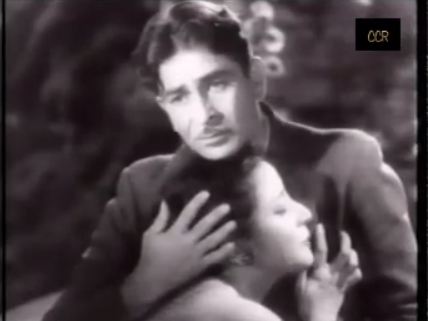
Loosely based on Fyodor Dostoyevsky’s Crime and Punishment, Phir Subah Hogi is probably the most under-rated of Raj Kapoor’s performances. The film begins with the usual tropes – a poor law student Ram (Raj Kapoor) makes do with whatever money his mother can afford to send him, and adds to his purse by pawning, if not outright selling his belongings.
He meets and falls in love with Sohni (Mala Sinha) who is as poor as he is. They are happy together, until, one night, in a bid to save Sohni from an unwanted marriage to a local moneylender, Ram sets out to steal money from the moneylender’s safe to pay off Sohni’s father’s debts, and ends up killing the moneylender when the latter returns home unexpectedly.
This is where the story really begins as Ram is on the run. He is chased not only by the police but also by his conscience. Over the next 24 hours, Ram will face not only his own inner demons, but also what he has become – an innocent man is arrested for the crime, and as he is produced in court, Ram has to decide – can he fight his guilt, and overcome his (very human) impulse to stay free?
https://www.youtube.com/watch?v=KL14oNFOk8M
As a man wracked by guilt, Raj Kapoor gave a performance that should lay to rest any doubts as to his acting ability. As he internalises his emotions, he also successfully portrays the angst of a man who knows the right thing to do but is unable to do it as it affects his whole life. Well directed by Ramesh Saigal, who also wrote the screenplay, the film’s music (a sterling score) was by Khayyam; Raj Kapoor was initially insistent that music for the film be scored by his longtime associates Shankar-Jaikishen, but lyricist Sahir Ludhianvi put his foot down – only a person who had read the book could do justice to the score . And so, Khayyam had a foot in the door. Raj Kapoor consented, under duress, with one caveat; he would vet each and every tune. Khayyam agreed. But when Raj Kapoor heard the score, he had the grace to admit that Khayyam’s score was unmatched.
4) Shree 420 (1955) 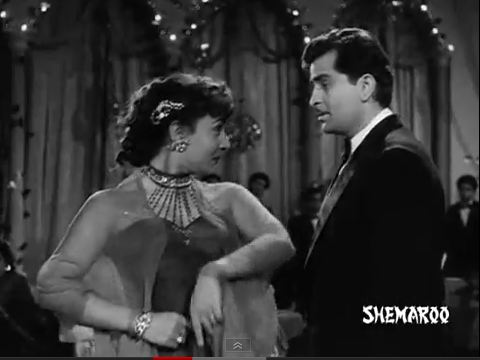
Shree 420 established, very firmly, the ‘tramp’ persona that Raj Kapoor wore like second skin. The title, referring to the section of the Indian Penal Code that deals with fraud, is that trait of the protagonist, Raj, who has come to Bombay in order to be successful. All he has with him is bundled up in a rag, and his most precious possessions are his B.A. certificate and a gold medal for honesty that was awarded to him in school.
His first attempt at scaring up a ride is unsuccessful; and it shows that though Raj is innately honest, he is not above a bit of chicanery to achieve his goals. His first acquaintance in Bombay is an old beggar, who fearing a potential rival, tries to beat him off with his crutch. Upon learning that Raj is not in the city to beg but to do an honest day’s work, he conducts a mini-interview. “Are you educated?”, he asks him. “Are you honest?” “Are you willing to work hard?” Upon hearing answers in the affirmative, the beggar chuckles -“You won’t get a job in Bombay.”
He is rescued by a tough, short-tempered banana seller, who, taking pity on him gives him a few bananas for free. Later, she also allows him to sleep on ‘their’ pavement. Raj’s sojourn in the city leads him to an acquaintance and then love, with the lovely Vidya, a school teacher, and with the sensuous Maya who initiates him into a heady world of luxury and easy money. His head turned, Raj leaves Vidya (knowledge) for Maya (illusion).
And that is the crux of the film – Raj, with his Japanese shoes, his English trousers, and Russian cap, is an anomaly just as much as his character is a contradiction. He is a man struggling for survival and is willing to do just about anything to achieve material success. How, on the way, he pawns not only his gold medal, but also his own integrity, and how and where redemption awaits him forms the rest of the tale.
The film’s music (Shankar-Jaikishen) took the narrative forward, coming as they did at crucial moments in the plot. When Raj has a few qualms about Vidya leaving, Maya sings Mud mud ke na dekh, mud mud ke (do not look behind you); when Vidya, broken-hearted at Raj’s betrayal bids him go away though she still loves him, the scene is emphasised with O jaane wale, mud ke zara dekh ke jaana – self-respecting Vidya will have nought to do with Raj such as he is, but she still loves him, and her weaker inner self-begs him to ‘look back just once’.
And the song in the climax is wonderfully picturized – Raj returns to his old friends from whom his wealth had distanced him, and find them singing an ode to love and loss. Raj is watching from a distance as the refrain is carried by a handcart driver, a taangewala, and a milkman to Vidya as she sits desolate outside her home. As she sings of her pain, and her inability to forget her love for him, Raj joins in with the original singers. The prodigal has returned. There is hope yet.
https://www.youtube.com/watch?feature=player_embedded&v=DlrOUiL_3oM
Unlike Jaagte Raho, Shree 420 was a more optimistic look at urban society; there was corruption, and temptation, and vices, but there was also love, integrity and decency. And what a man does or becomes is in his own hands.
5) Awaara (1951)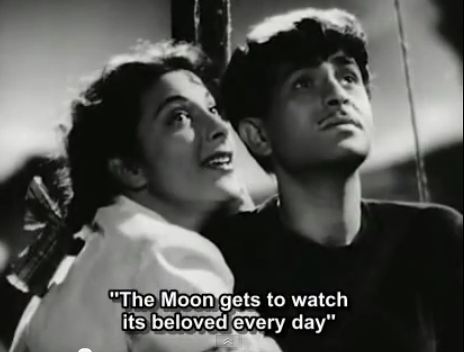
Awaara introduced a generation of filmgoers to the lovable tramp that became indistinguishable from Raj Kapoor’s reel-life persona. However, it wasn’t as pronounced as it would come to be in later movies. Here, Raju is not just a tramp; he is a hardcore criminal, ironically thrust into the seamier side of life by his father disowning his mother.
The film opens with a court scene – vagabond Raju is being tried for the attempted murder of Justice Raghunath (Prithivraj Kapoor in full form). When it turns out that Raju has no lawyer to defend him, the court seeks to appoint one, but in walks Rita (Nargis, in a very powerful role), the judge’s ward, and Raju’s lover. She will fight the case in his defence, thank you very much.
The judge glowers but Rita is unperturbed. And she begins her cross-examination, calling the presiding judge into the witness box, with some of the most powerful lines ever said in (a Hindi film) court – she asks the judge, when, where and why (कब, क्यूं, और कैसे) he abandoned his wife. The power of the dialogues lies not in the words, but in the way they are said.
And the scene is set for a long flashback. Judge Raghunath’s wife (Leela Chitnis) is kidnapped by Jagga (KN Singh), in revenge for having been wrongly sentenced for rape. When he learns that his kidnap victim is pregnant, he is triumphant. The judge will pay, and he, Jagga, will not lay a hand on the woman. A few months later, she is returned unharmed. When Raghunath finds out that she is pregnant, he throws her out of the house. And she, weary and helpless, gives birth to a son, whom she tries to bring up with honesty and integrity. However, Jagga is still around. His twisted mind realises that if he can turn Raju into a criminal, it will complete his vengeance. So quoth he, and so it was.
Raju meets Rita off and on in his childhood, but a fledgling friendship is destroyed by Raghunath, whose ward she is. They meet again, however, and this time, neither Raghunath’s disapproval, barriers of morality, nor Raju’s own hesitancy proves barriers to young love. Until Raju steals a necklace that the judge was bringing as a gift to his ward on her birthday. When Rita learns that the man she loves is a thief, she is heartbroken. And Raju withdraws; however, her love means much to him, and he yearns to break free from the chains that hold him back. But Jagga is still there, twisted, vengeful, criminal Jagga, who tells him that the way into crime is a one-way street.
When Raju finally learns that Jagga was responsible for his parents’ estrangement, he kills him and then goes to Raghunath’s mansion to kill him too. There is no love lost between him and his father. And now, his father is presiding over his son’s case. Will the bitterness of the past be washed away? Or will he allow his emotions to rule over justice?
This was a great film from a master director. With his foray into social problems, he wove skeins of romance and tragedy, crime and punishment, nature and nurture, music and drama into a cohesive whole. The movie had great performances from the two leads, whose chemistry on screen reflected their chemistry in real life (it is said).
The story was anchored by a towering performance from Prithviraj Kapoor as the embittered father who cannot (or will not) see that he made a heinous mistake many years ago. Nargis was wonderful in her role as Rita, an independent young woman, educated, self-willed, and surprisingly modern – she loves Raju and sees nothing wrong in pre-marital sex. (And horror of horrors, she is not even punished for it, except by having to wait for Raju to complete his prison sentence!) She is willing to fight for her man, not by singing Bhajans in a temple and willing God to change him, but by entering the ring, no holds barred.
Awara cannot be mentioned with a word (or two, or thousand) about its music. Apart from the consistently high quality of his music (everyone agrees that he had a highly developed sense of music, and could play many instruments – and well), the film showcased some of the best picturized songs in Hindi films. One was the bar (not a nightclub) sequence where Cuckoo is dancing to the bawdy encouragement of the regulars who are partially or wholly tipsy. The song is overshadowed by their raucous laughter and their lewd comments. At times, you can hear the conversation and the laughter above the song, which is the way it would be in real life.
The second, of course, is the famed dream sequence, one of the finest ever pictured – where Raj feels the tug of war between his former life and his aspirations for a better one. He is caught between heaven and hell, as expressed in the brilliant double-sider Tere bina aag yeh chandni / Ghar aaya mera pardesi. It’s a song that took three months to shoot, what with its architecture symbolising the steps climbing up to heaven, and the slippery slopes toward hell; a graceful Nargis promising redemption, and a giant KN Singh waiting for Raj to fall. There is a very interesting incident concerning the recording of this song. You can listen to one of the original musicians recount the anecdote, here. It is track number 5.4 on the list.
The refrain of O basanti pavan paagal plays intermittently in the background – a tune that Raj Kapoor would use almost ten years later in Jis Desh Mein Ganga Behti Hai.
6) Anari (1959)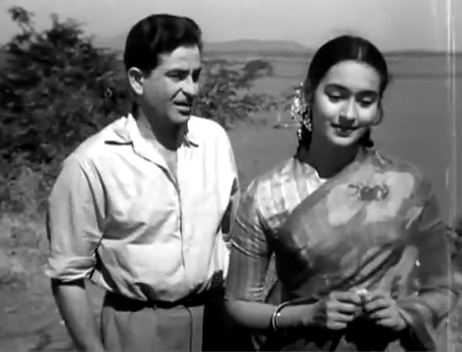
Anari fell into Hrishikesh Mukherjee’s lap, thanks to Raj Kapoor. The latter had seen Hrishida‘s debut film Musafir and though the film was not a commercial success, was impressed by its director. And Hrishida returned the favour by crafting a simple moral tale of good and evil, with some very against-the-stereotype characterisations – starting with Kapoor.
While Raj Kapoor was still playing the honest, intelligent, unemployed young man, Rajkumar, trying to navigate the shoals of a corrupt, materialistic world, it was a characterisation that was shorn of much of the usual mannerisms.
He runs into Ramnath (Motilal) when he returns a well-filled wallet to the latter; pleased with his honesty, Ramnath gives him a job in his firm. And Rajkumar works there, diligently, not knowing that a consignment of medicines that have been delivered for sale to retail outlets is made of spurious drugs.
And more trouble shadows him, as first, he learns that the ‘poor ayah’ Asha that he loved is actually Arti, this employer’s cherished niece. Then his beloved landlady, Mrs D’sa (Lalita Pawar), falls ill, is given the contaminated medicine, and dies. And Rajkumar is arrested for her murder. Will he ever prove his innocence?
tan played Asha/Arti, the young niece of the affluent Motilal, and Rajkumar’s love interest, who pretends to be poor in order to win his love, only to lose it when the pretence shatters. With Motilal as the uncle with grey shades to his character, and Lalita Pawar as the tart-tongued, kind-hearted landlady, the casting was pitch perfect. And the director, with a firm hand on the histrionics, toned down the entire pitch of the movie, keeping the narrative low-key, even as the story moved down a path of conflict between crass commercial interests and social responsibility, and the ending was happy – with reservations.
https://www.youtube.com/watch?feature=player_embedded&v=d1BIf0PN5x4
The film won the National Award for Best Feature Film in Hindi in 1959 and won Raj Kapoor a well-deserved Best Actor award; Lalita Pawar won Filmfare‘s Best Supporting Actress award, while Shankar-Jaikishen, Shailendra and Mukesh walked away with their awards for Best Music, Best Lyrics, and Best Playback (Male) respectively.
7) Chori Chori(1956)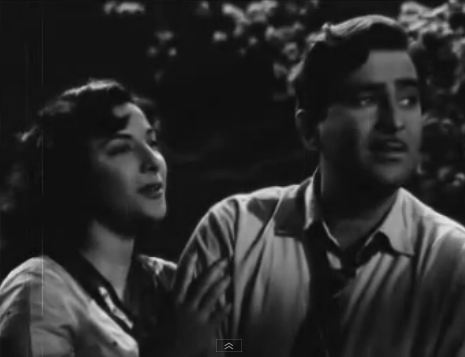
Probably one of the first ‘Road’ movies in Hindi films, Chori Chori was a very faithful adaptation of Frank Capra‘s It Happened One Night. It was a ‘lighter’ movie and one that exploited Raj Kapoor’s talent for comedy, flashes of which had been glimpsed in his earlier works. And Nargis joined him as the ditzy heiress, Kammo, who is running away from home to marry a man (Pran) who, her father warns her, is a playboy after her wealth. Her father advertises a reward for news of her return – Rs1.25 lakhs.
On her travels, she runs into an impecunious journalist, Sagar, and they detest each other on sight. Despite that, Sagar agrees to help her, if he could have the exclusive scoop on her elopement and marriage. And so they set off, sparring with each other on the way, but eventually falling in love with each other.
On the way, they run into a couple who, tempted by the vision of the reward, see Kammo only as a sawa lakh ki lottery. But four days later, Kammo is back home, and her father, seeing the change in his capricious daughter, gives in and agrees to her marriage with her playboy.
Only, Kammo does not seem as enthused about the marriage as she was before; and Sagar visits their home, asking for money, much to Kammo’s chagrin. Was Sagar also in search of easy money?
https://www.youtube.com/watch?feature=player_embedded&v=lVJYXbjefCs
This was one of the few films in which Manna Dey (and not Mukesh) gave playback for Raj Kapoor. Shankar-Jaikishen came up with a brilliant score in this movie, ranging from the pathos-ridden Rasik balma to the riproaring All line clear to the softly romantic Aaja sanam, to the frothy Panchchi banoon udti phiroon… and deservedly picked up their first ever trophy for Best Music.
The Raj-Nargis chemistry was as much on display here as in their earlier outings together. Who could have said, seeing them on screen that this film would see the last of the legendary RK-Nargis pairing? Nargis never acted with Raj Kapoor again, except for a cameo in Jagte Raho.
8) Aag(1948)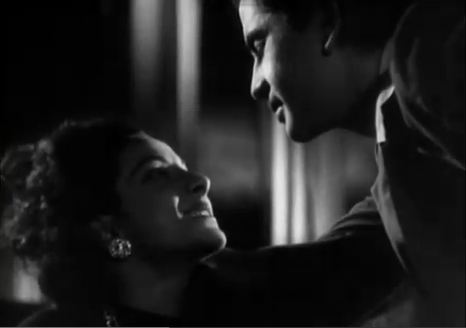
Aag was the beginning of the journey for a man who was destined to be known as one of India’s greatest directors. Directed when he was still 23, Aag was also the beginning of another partnership – that of Raj and Nargis, the adolescent daughter of Jaddan Bai. She was already a ‘star’ when Raj approached her mother to sign Nargis for Aag.
Aag broke away from many of the accepted conventions of storytelling on screen; the dialogues were less studied, more natural; the hero was not so much a ‘hero’ in the accepted sense of the word, as a man plagued by his own insecurities, and his need for approval.
Aag is one long flashback, a plot device that he used again in Awara.The film opens with a wedding. It’s night and there is a bejewelled bride (Nigar Sultana) waiting for her new husband. Suddenly, the silence is broken by an agonising scream. Kewal (Raj Kapoor) is badly scarred, and his frightening visage scares the new bride, as she lies sobbing uncontrollably.
Kewal (a young Shashi Kapoor) is enamoured of the theatre, much to the dismay of his mother, and the disapproval of his father who wants him to study well and join the family business of law. His friend and classmate Nimmi is the only one who supports his infatuation; but alas, her father is transferred and she leaves Kewal behind.
The story repeats itself in college when his classmate Nirmala (Kamini Kaushal) is forced to leave; her marriage is arranged and she comes to college one last time to take leave of him. When he fails the end-of-the-year exams, Kewal’s father is livid; he himself is unrepentant. A chance encounter with a rich theatre owner Rajan (Premnath), gives him the financial backing and moral support to begin his own theatre troupe.
A new girl (Nargis) comes in for auditions and he renames her ‘Nimmi’. As the rehearsals begin, she begins to fall for her young, handsome director. Kewal’s interest in her is almost detached, but Rajan, a painter, is enamoured of her waifish beauty. And when Kewal realises that, he sets fire to his own face, disfiguring it – after all, it was his ‘beauty’ that drew Nimmi to him. Her disgust and shock are hard to hide, and she seeks solace in Rajan’s arms.
https://www.youtube.com/watch?feature=player_embedded&v=6q8iopQ7TsA
This is his past; this is the story he narrates to the girl who, unwittingly, unknowingly, has become his bride. What will her reaction be? The ending is illogical, perhaps, but oh, so satisfying on an emotional, gut level!
The film was made by a very young cast and crew- cameraman VN Reddy was the oldest at 27! Raj Kapoor had many differences with his music director, Ram Ganguly during the film’s making. And for his next film Barsaat, he picked up a tabla player and a harmonium player from Prithvi Theatres – and a new music duo came to be – Shankar-Jaikishen.
9) Kal Aaj Aur Kal (1971)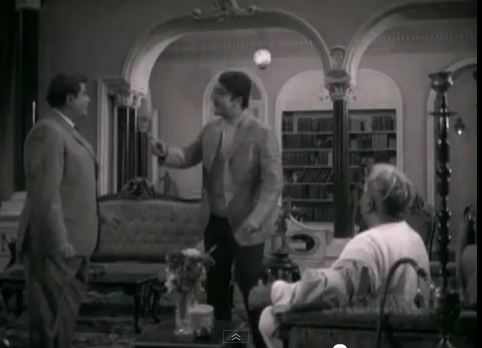
Directed by son Randhir Kapoor, Kal Aaj Aur Kal narrates the tale of three generations and the ideological clash between the oldest (kal) and the youngest (kal), where the middle generation (aaj) is the unwitting victim. It starred Prithviraj Kapoor, Raj Kapoor and Randhir Kapoor reprising their real life roles as grandfather, father, and son / grandson.
As Ram Kapoor (Raj Kapoor) eagerly awaits his son’s (Randhir Kapoor) return from abroad, he manages to persuade his father Diwan Bahadur to leave the village and come live with him. The father and son are great friends and understand each other very well. The problem arises when the grandfather makes his appearance and is shocked and disgusted at the ‘wayward’ ways of his only grandson.
Neither side is willing to give an inch, and Ram, who understands and empathises with both his father and his son, is torn apart by their constant arguments, and is hard put to play peacemaker.
https://www.youtube.com/watch?feature=player_embedded&v=81lwUGRTCPg
It was a decent directorial debut, and Raj Kapoor was in fine fettle as the man caught between the devil and the deep blue sea. His helplessness comes through, as does his love for each of them. The songs weren’t all that great, leading me to believe that the son had not inherited the father’s sense of melody.
10) Andaz (1949)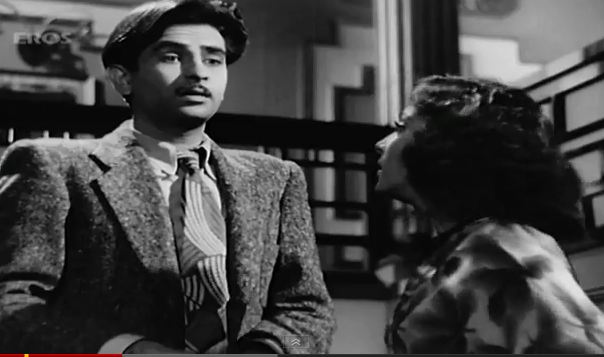
Andaz came out a year after Aag. It co-starred Nargis and Dilip Kumar (in his only outing with Raj Kapoor). It brought the issue of platonic friendship between man and woman to the fore. And it was, and remains, a valid question. Where director Mehboob Khan erred was in making it an ideological divide between the ‘westernised’ society and the ‘Indian’ one- where a woman will never be friends with a man other than her husband.
Neena (Nargis) is the spoilt, headstrong, charming ‘foreign-returned’ daughter of a rich businessman (this is important, because it is this that excuses her behaviour; a girl brought up in India would never behave thus!); while out riding on an out-of-control horse, she is rescued by Dilip (Dilip Kumar) with whom she becomes friendly. He often visits her at home, entertaining her with his singing.
Neena’s father thoroughly disapproves of his daughter’s free and easy ways and warns her about the consequences of her behaviour. Neena is nonplussed. Why would anyone think anything? Alas, Dilip does, mistaking her easy friendliness for love, only to be pulled up short when her fiancé Rajan (Raj Kapoor) arrives. And Neena is in love with him! Dilip bows out gracefully, but Neena, not knowing the reason why, pulls him back into their lives with tragic consequences.
This film was probably one of the first ‘love-triangles’ in Hindi cinema. It is certainly one of the finest. Even with its flaws (and I hated the ‘Western = bad, Indian = good” trope, especially meant as it was for women’s behaviour), Andaz was still ahead of its time. It’s a film that starts off lightheartedly enough but descends into darkness as it moves on.
While Nargis’ Neena and Dilip Kumar’s Dilip were sympathetic characters, Raj Kapoor’s Rajan was such an irritating character on the face of it that one almost willed Neena to throw him over for the more restrained (and gallant) Dilip. His insecurities and his absolute caddishness make Rajan the sort of person whom one loves to hate.
From his over-the-top lightheartedness in his initial scenes to the way his suspicions unravel, Raj Kapoor played him with a sincerity that made it plausible – his conduct is always as it is shown. He is emotional, he is friendly, welcoming Dilip as Neena’s friend. Does he, in fact, suspect that Neena is not as innocent as she claims? That she does, in fact, have a soft corner for Dilip?
Again, this is not to blame Neena. How many of us have bloomed under a mutual attraction, even if we were never to talk about it? How many of us have flirted, quite innocently, without much thought for the ramifications of such conduct? Where the film faltered was in punishing Neena at the end – and oh, such a punishment!
It is easy enough to play a sympathetic character; it’s hard to play one who is totally unlikable and still make that character work in that context. Raj Kapoor pulls it off with success. And I must confess that Andaz is the least favourite of my Raj Kapoor roles, but since I disliked him thoroughly in the movie, I can only say he succeeded in doing what his role set out to do.
As you can see from my l-o-o-o-n-g post, I am an unabashed fan of Raj Kapoor’s. And I am a bigger fan of his direction than I am of his acting, so wait and watch for a Raj Kapoor post under ‘The Masters’ series. To those of you who do not like him (and you know who you are! Grrr!), don’t say I didn’t warn you!
Written By:– Anuradha Warrier, is a writer, editor, film and music buff. She writes for pleasure, edits for a living, and indulges in watching films, listening to music, and writing about both on her blog Conversations Over Chai as and when time permits.
Caution: The opinion expressed in this article are the personal opinion of the author. Bollywoodirect is not responsible for accuracy, completeness, suitability or validity of any information in this article. The information/Opinion, facts appearing in it do not reflect the views of Bollywoodirect & Bollywoodirect doesn’t assume any responsibility or liability of the same.

